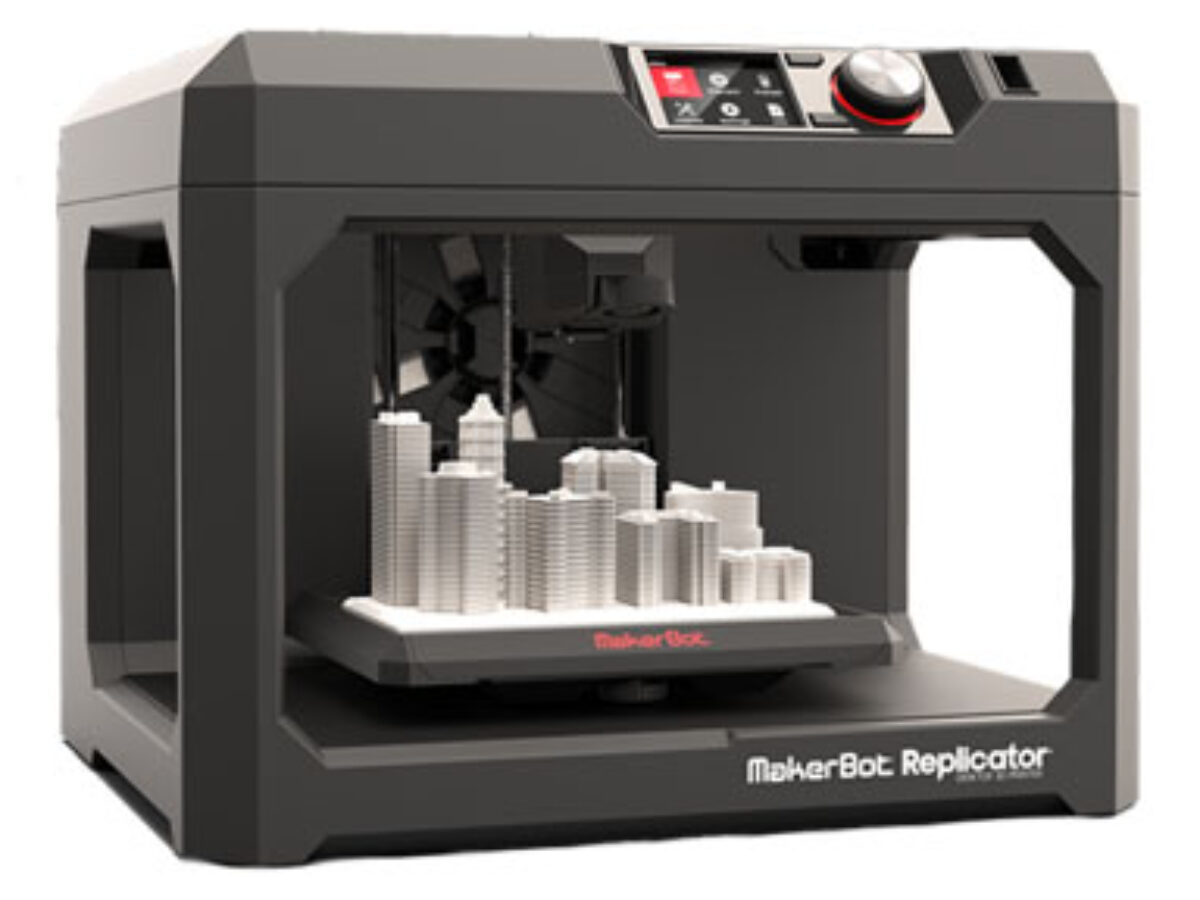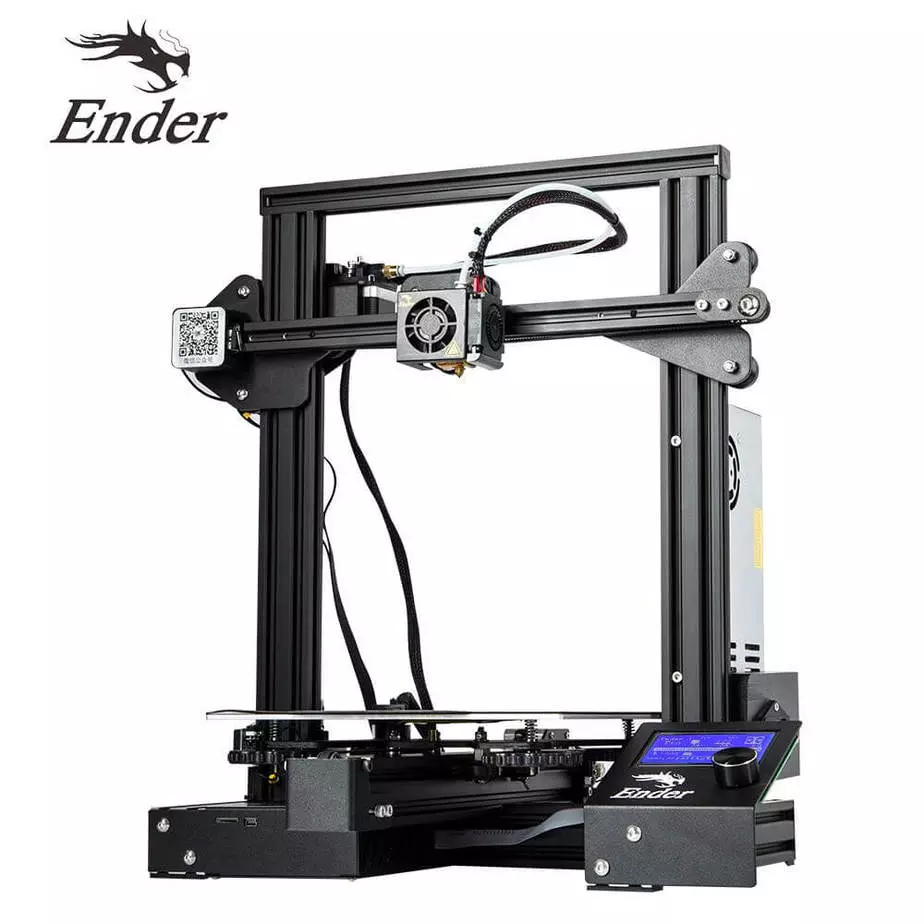Compare Replicator Plus vs Ender 3 PRO
Comparison between the best 3D printers
Choose the best 3D printer at the best price. The cheapest 3D printers are here.
Buy a 3D printer here with 3D Fila.
 |
 |
|
| Model | Replicator Plus |
Ender 3 PRO[BUY Ender 3 PRO] |
| Printing Material | Filament | Filament |
| Buy Filament for Makerbot Replicator Plus | Buy Filament forCreality 3D Ender 3 PRO | |
| Estimated price | $2099,00 | $258,00 |
| Manufacturer | Makerbot | Creality 3D |
| Release Year | 2016 | 2019 |
| Print Volume [mm] | 165x295x195 | 220x220x250 |
| Printer Size [mm] | 410x528x441 | 440x440x465 |
| Weight [kg] | 18,3 | 6,62 |
| Power Loss Recovery | YES | NO |
| Enclosed printer | NO | NO |
| Bed Leveling | Automatic | Manual |
| Filament End Sensor | YES | NO |
| Bed type | Heated | |
| Power supply system | Bowden | Bowden |
| Standard nozzle | 0,4 | 0,4 |
| Maximum Nozzle Temperature [°C] | 230 | 255 |
| Maximum Bed Temperature [°C] | 110 | |
| Maximum printing speed [mm/s] | 150 | 180 |
| Filament holder | YES | YES |
| Camera for supervision | YES | YES |
| Recommended filaments | PLA | PLA, TPU, ABS, PETG |
| Recommended slicers | MakerBot Print Software | Cura, Simplify, Slic3r |
| Maximum Resolution [mm] | 0,1 | 0,1 |
| Processor | 32 bits | |
| Display | Mono | |
| Power Supply | 110/220V / 240W | 24V / 360W Meanwell |
| Connectivity | USB / Wi-Fi | SD / USB |
| Operating systems | Windows, Mac, Linux | Windows, Mac, Linux |
| Date of registration in the system | 2022-11-15 | 2021-04-14 |
| Release date | 2016 | 2019 |
| Extra features | The Replicator Plus printer is easy to use and has very good print quality. Its software is user-friendly and powerful, with USB, Ethernet, Wi-Fi and support for printing via pen drive. With a safe design for an open frame printer, it is relatively quiet. The Smart Extruder+ detects filament end and pauses printing automatically, in addition to notifying via apps. It has a large print volume, with a non-heated and coated print bed for easy removal of parts. It also has a webcam for remote monitoring of prints. | The Ender 3 Pro stands out for its beginner-friendly assembly and easily modifiable structure. With a 350W power supply, it heats up quickly and has a simple application that offers good print quality. However, its motors and fans are noisy, and the interface seems outdated. Assembly is accessible, without the need for advanced techniques, and it has integrated belt tensioners. It includes a detailed guide and supports microSD card and USB. |
| Support for multiple colors and materials (AMS and CFS) | NO | NO |
Notes * |
||
| Cost-benefit | 6 / 10 | 6 / 10 |
| Hardware | 2.5 / 10 | 0.5 / 10 |
| Tela | . | . |
| Print volume | 3 / 10 | 3 / 10 |
| Performance | 1 / 10 | 1 / 10 |
| [BUY Ender 3 PRO] |
Conclusion |
| In comparing the Makerbot Replicator Plus and the Creality Ender 3 Pro, it's clear that both 3D printers cater to different user needs and budgets. The Makerbot Replicator Plus, although significantly more expensive, offers advanced features such as automatic bed leveling, a filament end sensor, and comprehensive connectivity options, including Wi-Fi and Ethernet. It is designed for ease of use, particularly appealing to those who prioritize convenience and are willing to invest more for a plug-and-play experience. It also boasts good print quality and a larger print volume, making it suitable for users who anticipate taking on diverse and complex projects. On the other hand, the Creality Ender 3 Pro excels in affordability and modifiability, making it a favorite among hobbyists and DIY enthusiasts. While it lacks some of the advanced features found in the Replicator Plus, its manual bed leveling and absence of a filament end sensor can be overlooked by those who enjoy tinkering and customizing their machines. The Ender 3 Pro has a commendable print volume and is compatible with a wider variety of filaments, enhancing its versatility for different projects. Ultimately, choosing between these two 3D printers comes down to budget and user experience preference. The Makerbot Replicator Plus is ideal for users seeking ease and quality without extensive setup, while the Ender 3 Pro is perfect for those looking for an affordable entry point into 3D printing and who appreciate the opportunity to modify and upgrade their machine over time. Thus, the decision should align with individual priorities—whether that is advanced functionality and support or cost-effective flexibility. |

